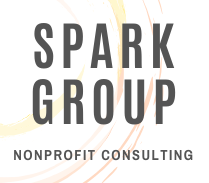Donor Stewardship: Crafting Impactful Messages
From the bottom of my heart to the moon and back, you really made my day! Is that too personal or should I be a little more formal? Donor stewardship is everything that happens after someone has made a donation. Your donors should have a positive experience and want to continue supporting your organization’s needs in the future. Before getting to the crafting of your impactful fundraising messages, let’s review what professionals mean when they ask for your donor retention rate.
Do•nor Re•ten•tion
noun
A measurement of how many last year donors returned with another gift to your organization in the next year.
According to the Association of Fundraising Professionals, the overall 2020 donor rate was 43.6%. It is recommended that the average donor retention rate for nonprofit organizations be 45% or higher. To do the math, if you have 100 donors in year one and 52 of those donors returned with making another gift in year two, the donor retention rate is 52%.
Why Retaining Donors is Important
It requires a certain amount of time and marketing resources to identify and secure new donors. It is easier and more affordable to steward existing donors than it is to recruit new ones. Current donors can become long-term or loyal donors to your organization. They can recruit other volunteers and donors, and they are likely to increase their giving amount over time.
Creating a Culture of Gratitude
According to Candid, a research organization on nonprofits and foundations, donors that receive a thank you message within 48 hours are four times more likely to give again. Also, the likelihood of donors returning with a second gift becomes slim beyond 72 hours of waiting for a thank you message. Even though it can be challenging for some organizations to do a timely gift processing, your organization should find a way to get that thank you note to the donor within 48 hours, no matter how big or small the donation is. Connect with the donor by sending a personalized email or having a staff or board member make a brief phone call. After making that critical contact, you can follow up with a handwritten thank you note to show your appreciation for the gift. Donors want to feel good right after they make the donation.
Crafting Highly Personalized and Meaningful Message
When preparing to send a thank you note to your donors, consider:
Who should do it: Donors appreciate receiving a meaningful message, especially coming from someone who is directly impacted by the gift. Think about whether the executive director, a board member, a staff member, or a long-serving volunteer should make that initial connection.
How you should send it: Although it depends on how the donor submitted their gift, you should respond the same way or more personally. For example, if the donor mailed the donation, you should write back by direct mail. However, with snail mail, you should make a phone call (or send an email) within 48 hours to let them know that you’ve received the gift and to keep an eye out for your letter. On the other hand, if the donor responded with a donation through email, it is okay to thank them by email.
What to say: There are four parts in crafting your thank you message: introduction, expressing gratitude, sharing the impact, and closing.
Introduction: It is more personal to address the donor by name. If this is your first time connecting with the donor, briefly introduce yourself and your role.
Express your gratitude: Start with your reason for contacting the donor, which is to thank the donor for making a gift to a particular campaign.
Share the impact: Demonstrate to the donor what or why the gift made a difference. You could also describe what you intend to do with the donation or how the gift will make an impact.
Closing: Conclude your message by thanking the donor again for the gift and signing off. If you have upcoming events that donors can get involved with or you want them to know about, please feel free to share that information with them. It is important to note that this should be a pure thank you message (do not ask for another donation in the same message.)
Donors appreciate receiving a personalized thank you message right away. Do you need help with stewarding your donors or crafting your thank you messages? Spark Group Consulting can help! Schedule a free 30-minute chat today.
⭐ Join our weekly newsletter where we share tons of exclusive tips, tools, grant opportunities, and resources to our subscribers. Subscribe on the Spark Group home page.




